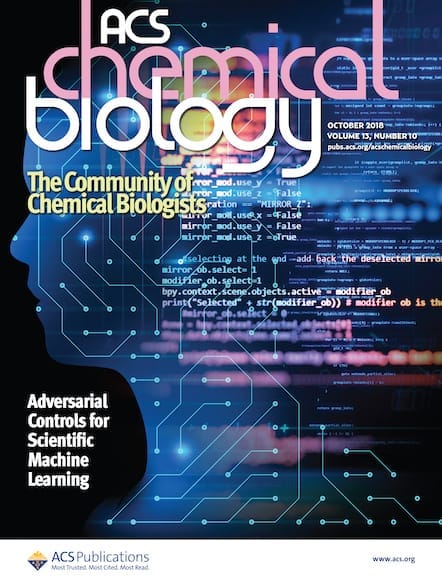Chemical biologists have integral contributions to make in the fight against COVID-19. Chemical tools can address challenges in biology, which is what is required to understand and mitigate the spread of SARS-CoV-2. ACS Chemical Biology invites you to read three articles by chemical biologists from around the world about their experiences of moving their research forward […]

Chemical biologists have integral contributions to make in the fight against COVID-19. Chemical tools can address challenges in biology, which is what is required to understand and mitigate the spread of SARS-CoV-2. ACS Chemical Biology invites you to read three articles by chemical biologists from around the world about their experiences of moving their research forward in the environment of the current pandemic and associated social distancing, as well as developments in diagnostics and therapeutics made by researchers in their own country. Subsequent articles will be published throughout the year from the viewpoints of researchers in additional regions, relaying their own experiences, as well as those of their local chemical biology research communities in response to COVID-19.
Scientific Response to the Coronavirus Crisis in Spain: Collaboration and Multidisciplinarity
ACS Chem. Biol. 2020, 15, 7, XXX-XXX
DOI: 10.1021/acschembio.0c00496
Oscar Millet, Aitziber Cortajarena, Xavier Salvatella, and Jesús Jiménez-Barbero wrote from the perspective of chemical biologists located in Spain while the COVID-19 pandemic was at its peak in the region. They describe the status of the situation in Spain in April of 2020, and the reaction of the local scientific community which has been dealing with the pandemic by focusing efforts on research both in academic and industrial labs. The authors explain that the efforts by Spanish researchers are best summarized by the concepts of collaboration and multidisciplinarity. They highlight vaccine research conducted by the National Center for Biotechnology of the Spanish Research Council producing attenuated vaccines through genetic manipulation of the entire virus, as well as the development of an mRNA anti-COVID-19 vaccine that employs gene delivery vehicles to facilitate the entry of viral proteins encoded in the mRNA cargo. Drs. Millet et al. describe the development of sensitive, accurate antibody testing kits using protein-stabilized metal nanoclusters at CIC bioGUNE. The authors also detail computational studies underway, including those being conducted at University of Barcelona, CSIC, and the Institute for Computational Chemistry and Catalysis in Girona focused on elucidating the fundamental mechanism of viral pathogenesis and therefore identification of potential druggable mechanisms/targets. Lastly, the authors highlight Spanish studies to identify effective treatments for COVID-19, including the investigation of metabolic pathways having therapeutic potential by ATLAS Molecular Pharma. The authors are optimistic that the emerging projects have great promise to not only address the current pandemic but to reshape the scientific landscape in Spain for years to come.
***
When the Others Become Us: A Chemist’s Perspective of the COVID-19 Outbreak in Italy
ACS Chem. Biol. 2020, 15, 6, 1279–1281
DOI: 10.1021/acschembio.0c00289
Sara Sattin (Università degli Studi di Milano) wrote from Italy in the spring of 2020 while daily reported COVID-19 cases were reaching their peak in that country, and the government had announced lockdowns and restrictions on movement. Dr. Sattin shares her reflections on what it’s like to live in an environment with a very high number of infections and fatalities in the second disease “hot spot” that developed internationally. She describes modifications and accommodations to the structure of teaching and academic research in Milan at the time and to what extent that research and teaching had to be temporarily put on hold. Dr. Sattin also highlights the critical research progress in several different areas made by chemical biologists working in both industry and academia, including work on clinical isolates, as well as clinical trials of Remdesivir and Tocilizumab by the Italian Drug Association (AIFA) and Gilead. She highlights the phylogenetic analysis of SARS-CoV-2 by Zehender at University of Milan, and the status of development of diagnostic tools by Italian company DiaSorin in collaboration with the Spallanzani Institute and the S. Matteo Hospital in Pavia. Dr. Sattin concludes on a hopeful note highlighting the significant research funding available within Italy alone toward the fight against COVID-19, as well as the outstanding efforts by healthcare professionals and the important role of social distancing amongst the general population to mitigate COVID-19 spread.
***
Fighting the Coronavirus Outbreak
ACS Chem. Biol. 2020, 15, 4, 799–801
DOI: 10.1021/acschembio.0c00175
Jie Wang (Peking University), and Jie P. Li (Nanjing University) detail their initial thoughts on the spread of COVID-19, and what it was like to conduct research during the early days of the pandemic when residents of China were instructed to “shelter-in-place”, and very little was known about the illness caused by the novel coronavirus SARS-CoV-2. They highlight work conducted at the Chinese Academy of Sciences on virtual drug screening using existing clinically-approved medications to determine whether any of these could be co-opted for use with COVID-19 patients to improve clinical outcomes. Also mentioned are efforts by researchers at Shenzhen University to develop a chemiluminescence-based antibody detection kit as one of the earliest such tests for the presence of circulating antibodies against SARS-CoV-2 (and therefore indicating previous infection by, and current immunity to the virus). Drs. Wang and Li conclude by outlining the research directions that need to be pursued by the chemical biology research community in support of clinicians to mitigate the spread and treat COVID-19.
